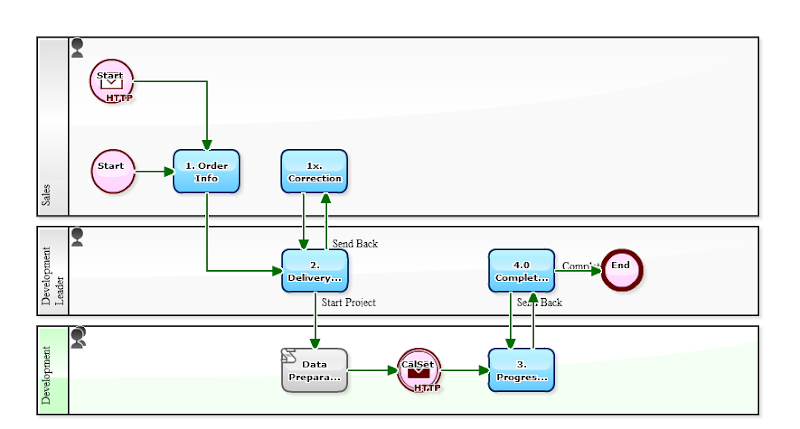Team members would rather continue to recognize the deadline for the "processing of their own". In other words, they barely have chances to recognize the "Delivery Date" that is the deadline of entire steps. Watching the screens of the Workflow system, even though the deadline of 'underwritten processing of their own' is obvious, the "Delivery Date" which should be important for the team is hardly to be recognized.
Furthermore, "cross-project information" such as 'a lot of Delivery Dates are concentrated in this month', there will be no chance to grasp them.
In the following Workflow, "Data of Delivery Date" is arranged to be synchronized to a [Calendar system]. Specifically, "Delivery Date data" in the 'order information' will be automatically written to the Google Calendar, using the secure communication of OAuth. Looking at the calendar, "distribution of Delivery dates" is obvious at anytime. This information will be a very important source not only for the team members, but also for directors and auditors.
[Contract-Delivery flow]








